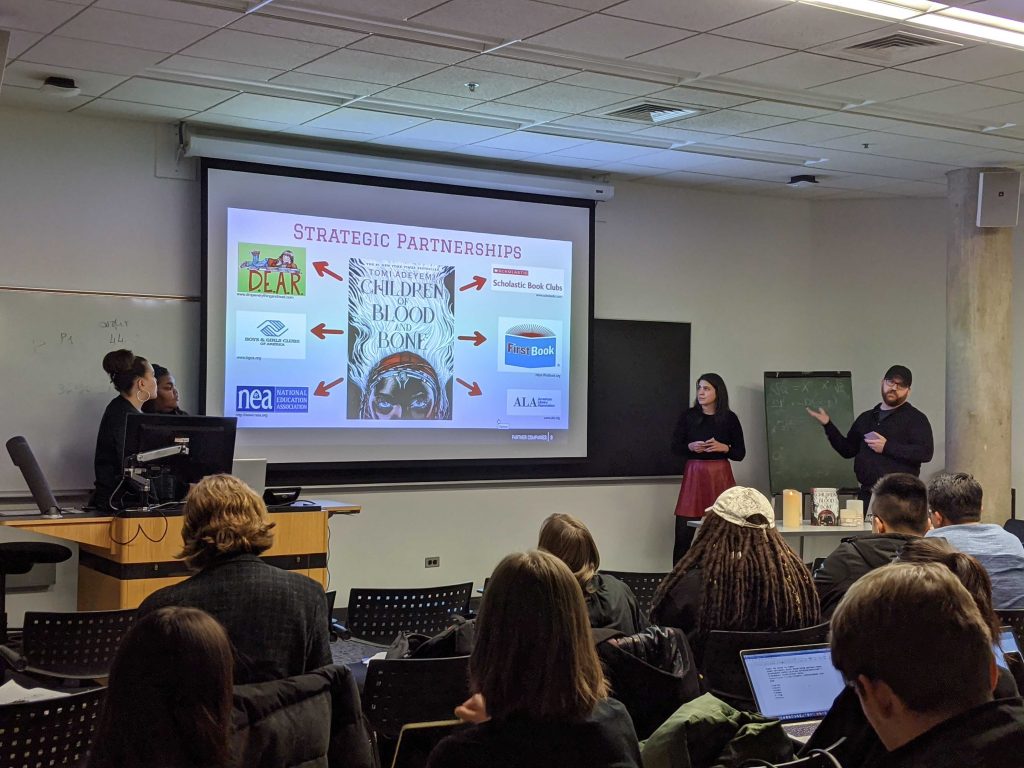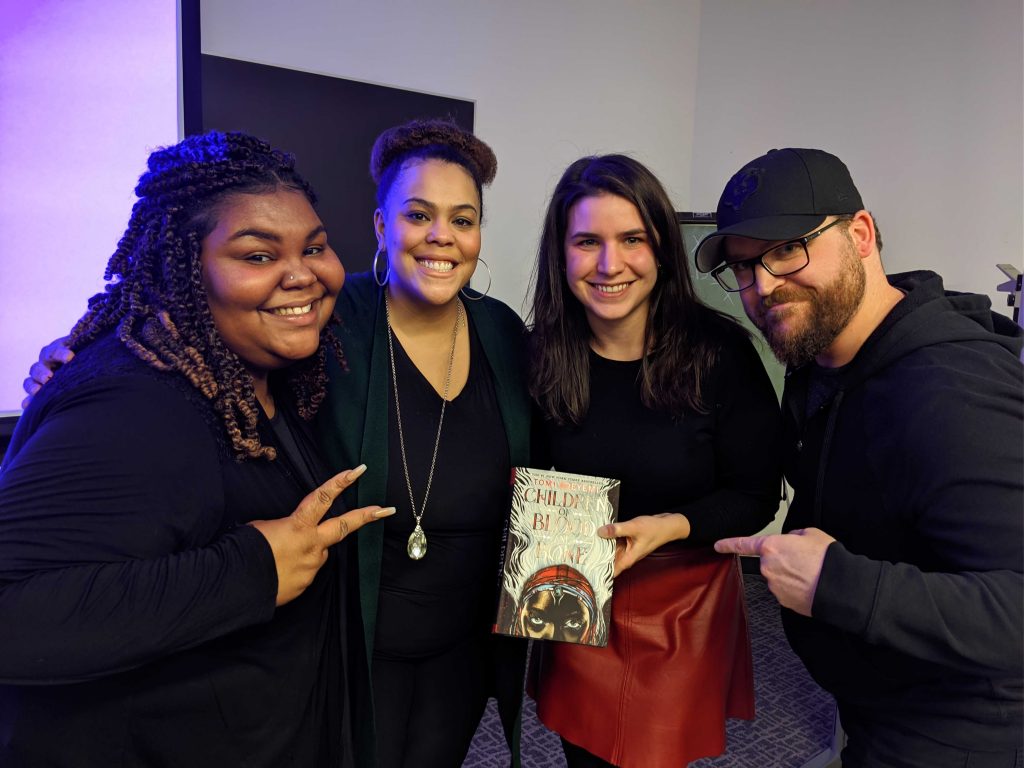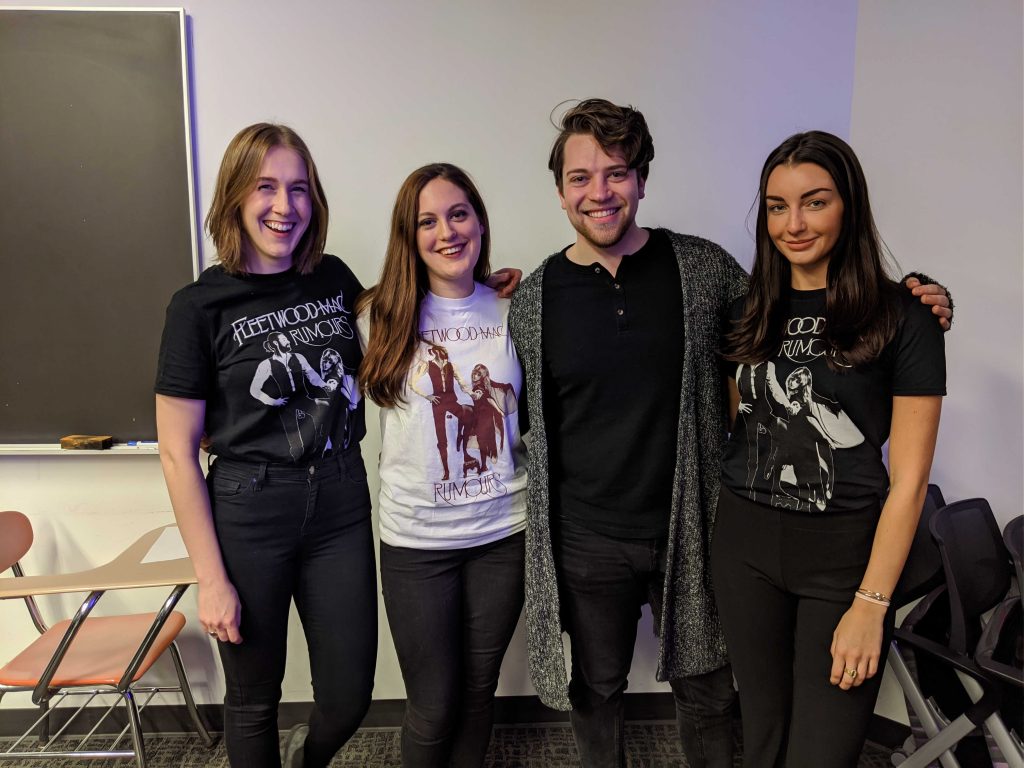
by Samantha Sartori
When signing up for a master’s program focused on business knowledge for the creative world, the last thing I thought I would be taking was a history course. However, after our first lecture, I knew Professor Smith’s Understanding the Creative Industries would be integral to knowing how the arts, media and entertainment worlds operate.
Let me take a step back. Understanding the Creative Industries is more than just a history course. The class is structured to learn about how art and business align. But to truly “understand the creative industries” and the relationship between the creative and business world, you need to know your history.
 Each week, we would take a look at a different business concept—such as censorship, copyright, or globalization—learn about its history and background in the creative world, and how it is relevant to hot topics today. We also studied more specific subjects to the creative industries, like above-the-line and below-the-line workers. At the start of each class, students discuss the current happenings in an industry of their choice as it related to the topic of the lecture. The industry updates helped us familiarize ourselves with top industry sources. For example, I became an avid reader of Variety and Vulture to keep myself in-the-know on the “streaming wars,” since content creation and television is a big interest of mine. Some of my classmates were also interested in this topic, while others explored topics like the publishing industry, advertising world, and the music scene.
Each week, we would take a look at a different business concept—such as censorship, copyright, or globalization—learn about its history and background in the creative world, and how it is relevant to hot topics today. We also studied more specific subjects to the creative industries, like above-the-line and below-the-line workers. At the start of each class, students discuss the current happenings in an industry of their choice as it related to the topic of the lecture. The industry updates helped us familiarize ourselves with top industry sources. For example, I became an avid reader of Variety and Vulture to keep myself in-the-know on the “streaming wars,” since content creation and television is a big interest of mine. Some of my classmates were also interested in this topic, while others explored topics like the publishing industry, advertising world, and the music scene.
Reading, speaking to the class, and writing about what’s happening in the industry came into play at the end of the quarter when it was time to write our final papers and present the transmedia franchise group project. While it’s generally obvious what a final paper is, you may be thinking, “Sam, what is a ‘transmedia franchise’ project?”
 Think Harry Potter, The Avengers or The Lord of the Rings. A successful transmedia franchise is one that is spread across as many different media platforms as possible, reaching both mass markets and niche audiences. Towards the end of the quarter in Understanding the Creative Industries, we were divided into small groups to develop a franchise of our own based on ideas submitted by our cohort. This was the culmination of all of our knowledge from the semester and why it was so crucial to understand the history of the creative industries; to learn how creative franchises have become successful in the past, and what hasn’t resonated with audiences.
Think Harry Potter, The Avengers or The Lord of the Rings. A successful transmedia franchise is one that is spread across as many different media platforms as possible, reaching both mass markets and niche audiences. Towards the end of the quarter in Understanding the Creative Industries, we were divided into small groups to develop a franchise of our own based on ideas submitted by our cohort. This was the culmination of all of our knowledge from the semester and why it was so crucial to understand the history of the creative industries; to learn how creative franchises have become successful in the past, and what hasn’t resonated with audiences.
All of the transmedia franchises developed in our cohort were unique — some were inspired to further build the worlds created by famous directors, like Hayao Miyazaki or Wes Anderson, others used the popularity of successful TV shows, like American Horror Story and Avatar: The Last Airbender to see these stories in new ways. Whether inspired by a famous music album, like Fleetwood Mac’s Rumours or a popular young adult series, like Children of Blood and Bone, our cohort got to really get creative.
Understanding the Creative Industries builds a solid framework for the MSLCE program, giving students the lexicon they need for the creative world and also providing a historical context so students leave the class knowing where the industries came from and where they are headed.